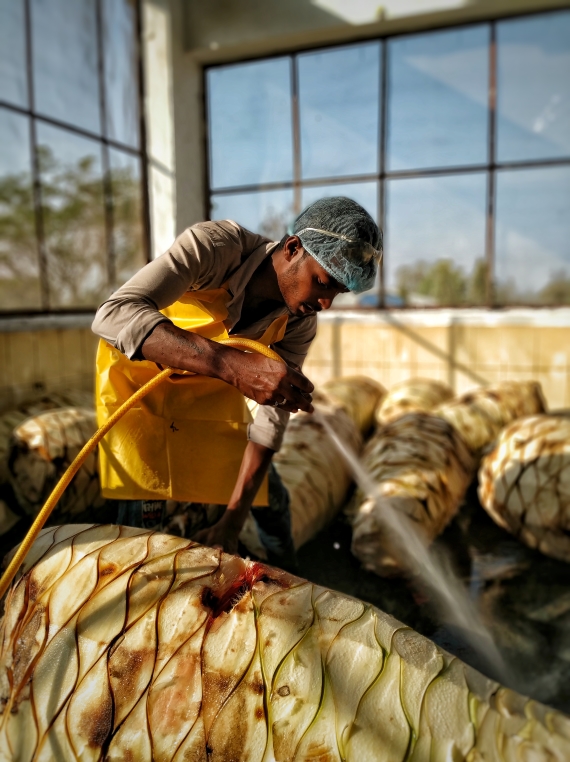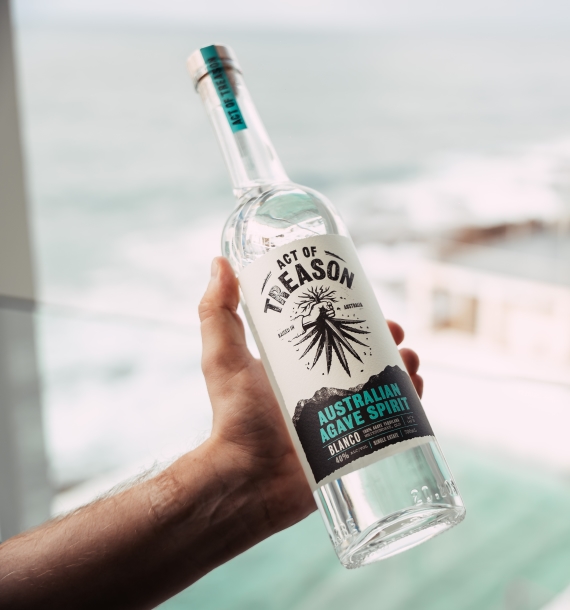Mexico is the home of agave spirits, in particular tequila. It has long-standing traditions and regulations which make it a recognised name around the world. However, agave doesn’t just grow in Mexico. During the reign of Queen Victoria at the peak of the British Empire, agave was introduced throughout the colony as a form of fencing to protect the great railways which were crucial to British trade. Today, there are still wild agave in India, South Africa, Australia and pretty much every hot country which came under British rule – former French colonies are the same but for sugarcane. Therefore, with pockets of agave all over the world, a new wave of non-Mexican agave brands has arrived, but without any of the rules or regulations which affect tequila under the Consejo Regulador del Tequila.
If you were to draw a horizontal line from Jalisco it would run straight through the heart of India. Desmondji is a brand created by Desmond Nazareth in the noughties and its Agave India distillery, built in 2007 in the Deccan Plateau of southern India, remains the only craft distillery in Asia making agave spirits. While the distillery provides for Desmondji’s 100% and 51% agave lines, it also sells bulk agave spirit to other Indian brands and overseas. One of these domestic brands is Pistola, which earlier this year received a minority 15% share investment from Diageo’s Indian arm, United Spirits.

“We were surprised by this because ultimately we make the spirit, but nevertheless we were quite pleased in a way that international companies as big as Diageo have shown financial interest in Indian agave, because it’s something we’ve been doing for a while and it validates our progress,” Nazareth tells DI.
“We’re adding 12 fermentation tanks, two autoclaves and an extra pot still for secondary distillation. Our site has 44 acres so we have lots of room to continue expansion. However, we want to do this in a responsible manner.
“Agave is good for soil composition and an efficient crop when it comes to water retention. We have a 25,000-acre project with multiple varieties of agave and the plan is to harvest 2,500 acres a year and rotate, allowing all the agave to fully mature.”
The plant used to make Desmondji is agave Americana, which is significantly bigger than the blue weber variety used in tequila production. The agave used by Desmondji is technically wild as it wasn’t planted for cultivation, however Nazareth has relationships with local farmers surrounding the distillery who planted agave for fencing purposes.
“They now see value in the plant for the first time and we pay them the same as they would get for sugarcane, which is a cash crop here in India,” says Nazareth. “We only use mature agave and if they were to flower, they would only survive another six months anyway.”
Down under
One customer of Agave India’s bulk spirits is Austrian Martin Grassl, who founded agave spirits brand Porfidio back in the 1990s. As well as collaborating with Nazareth, Grassl believes Australia has big potential for the future.
“I think in first world countries such as the US and Australia they’re well qualified to introduce technical innovation, particularly taking influence from their advanced wine industries,” says Grassl. “In Australia, one of the big challenges is the high labour expenses and the Australian government has been investing a lot of money to develop machinery for agave harvesting. This is important because you cannot support the inhumane labour conditions in Mexico for harvesting agave.
“Another big issue with harvesting is the amount of waste material. More than half of the plant isn’t used, and a lot of it is simply dumped in Mexico, but I think in first world countries they’re better equipped to find a use for this waste material. This is where leadership in the agave industry will come from.”

However, when it comes to flavour, Grassl is excited by global agave. “For me, tequila is like Chardonnay in the wine industry – it’s largely the same flavour. We have an opportunity to use new varieties of agave outside Mexico as well as develop new techniques and processes for harvesting and producing these spirits.
“I think what happened in the wine industry 40 years ago is going to happen in the development of New World agave in Australia and the US.”
Indeed, it was around 50 years ago that Baron Rothschild created the first Bordeaux-style wine in the Napa Valley, which was revolutionary at the time, and yet to consumers, the idea of agave spirits outside Mexico is similarly alien.
“I’d love to know what the tipping point was that convinced consumers that quality wines could be made outside Italy and France. Perhaps Chateau Montelena winning the Judgement of Paris in 1976 or Penfolds Grange winning perfect scores against the traditional châteaux of Europe,” says Trent Fraser, CEO of Top Shelf International, which produces an Australian agave spirit called Act of Treason.
“If it wasn’t for the kangaroos and gum trees, you’d feel like you’re in Guadalajara,” says Fraser, who previously helped launch Volcan tequila for LVMH. “The farm’s location near the Whitsunday Islands on the east coast of Australia has the same temperature and humidity as Jalisco.”
Right now, Fraser says the brand has 621,000 plants in the ground, making it the largest agave farm outside Mexico. And just like the farms of Mexico, Act of Treason is using blue weber agave.
“Blue weber is a tried and tested variety and it felt like the natural one to use,” he adds. “In the wine industry it’s accepted that you find Cabernet Sauvignon planted in different regions all over the world to provide different profiles, and the same can be for agave. The liquid we’re producing doesn’t taste like any of the other big brands in the tequila industry – we’re still using the same raw material but we’re different. Instead of striking a deal with a celebrity, I’d rather we invested more money into the land and techniques to produce an expressive spirit which adds something to the agave industry.”
As Grassl mentioned earlier, one of the challenges for Australia is the development of harvest technology.
Fraser adds: “I used to have 37 workers on my payroll in Mexico and you’d be shocked by how little that cost. Of course, in Australia we don’t have that kind of labour force at our disposal so we’re having to be innovative in the way we harvest and process the agave. But, largely speaking, we’re sticking to many of the traditional processes of tequila production.”
Regulation
Having recently enjoyed success at international tasting competitions in London and the US, Fraser believes the next step aft er gaining credibility is to build brand awareness and education.
“There’s a significant demand domestically and we really want to win over tequila drinkers in Australia, but for sure we’re going to export to the US and other mature spirits markets around the world.”
As previously discussed, one of the major plus points for New World agave is the lack of regulation. Brands across the globe have the freedom to decide what variety of agave to use and how to process it. Most producers are generally in favour of regulation so long as it is inclusive and forward-thinking but, given its infancy, there’s no rush for formal proceedings. That is, except for one.
The biggest market for tequila globally is the US and therefore California is poised to become a major player in agave spirits outside Mexico. Not only does it have an existing tequila market with educated consumers, it also has the correct growing conditions and an abundance of wild agave.
The California Agave Council was set up to create an industry-standard – it currently has 13 distillers and around 50 growers signed up. In 2022, a bill was passed that requires any agave spirits sold in California labelled with the words ʻCalifornia agave spirits’, in any combination, to be made entirely from agave grown in the state of California without any flavour or colouring additives. As well as labelling regulations, the council has collaborated with the University of California to study the sustainability of agave as a drought-resistant crop.
Given that California already has an abundance of producers, it makes sense to get them aligned and collaborate towards a more sustainable future. Perhaps California, alongside the aforementioned countries, could be the catalyst for New World agave, much like the arrival of New World wines 50 years ago.




